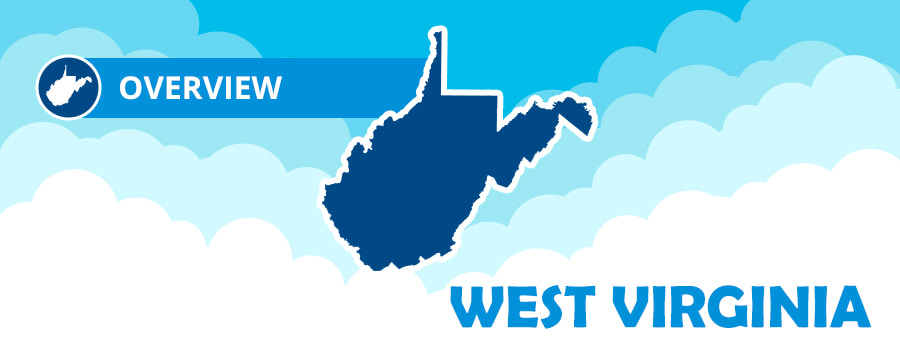Homeschooling In West Virginia
If you live in West Virginia or are moving to the area and are interested in homeschooling, you’ll need to learn how homeschooling works here. Parents have 2 options to homeschool their child in West Virginia. On this page we’ll explain the difference between both options, as well as curriculum choice, homeschooling groups and other useful information to help you choose the best option for your family.
- How to Start Homeschool in West Virginia
- West Virginia Homeschooling Laws
- West Virginia Homeschool Associations
- West Virginia Homeschool Groups and Co-ops
- West Virginia Homeschool Field Trips
- West Virginia Standardized Testing and Test Prep
- Why Time4Learning is the Leading Homeschool Curriculum in West Virginia
- How to Build the Best Homeschool Curriculum for PreK-12 in West Virginia
This information should by no means be interpreted as legal advice. It is your responsibility to interpret and understand the laws that you will be homeschooling under.
How to Start Homeschooling in West Virginia
Families wondering how to enroll in homeschool in West Virginia need to know they have 2 options to legally homeschool in the state.
- Option 1: getting approval from a school board for homeschooling.
- Option 2: submitting a notice of intent
Each of these options has different regulations regarding curriculum choice, recordkeeping, and credentials. Most homeschooling families in the state choose the second option because it provides them with more flexibility and less restriction.
Welcome to Homeschooling Guide
Download this FREE resource where experienced homeschoolers share their stories for how to begin homeschooling, understanding your child academically, planning your days, and much more.
West Virginia Homeschooling Laws
Most families in West Virginia choose to homeschool under the option of sending a Notice of Intent to their county’s school superintendent. With this option families will:
- Notify their superintendent yearly of their intent to homeschool
- Provide proof that the parent(s) homeschooling have earned a minimum of a high school diploma
- Provide a brief outline of your plan of instruction for the year
- By June 30 of each year, provide proof that your child has been receiving instruction
West Virginia Homeschool Associations
When you are still in the “research” phase of homeschooling, a state homeschool association can be an incredibly helpful resource. West Virginia is fortunate enough to have two such organizations–one aimed primarily at faith-based families and another with a more inclusive focus.
- Christian Home Educators of West Virginia (CHEWV)
- West Virginia Home Educators Association (WVHEA)
West Virginia Homeschool Groups and Co-ops
While associations are helpful for getting the “big picture” of homeschooling in your state, you’ll also benefit from getting to know local homeschoolers as well. Often, there are local or regional support groups that you can join to build camaraderie with other families who have chosen this unique educational path. To discover how to find a support group near you, start with our West Virginia Homeschool Groups and Co-ops page.
West Virginia Homeschool Field Trips
Living in the Mountain State has its definite perks, including multiple opportunities to enjoy the great outdoors. Why not turn those excursions into educational field trips by heading to locations that will align with your curriculum? To browse the natural, historic, and cultural field trips around the state, visit our Homeschool Field Trips in West Virginia post. Please make sure to contact each site before you plan your visit, as COVID-19 may have impacted their hours of operations.
West Virginia Standardized Testing and Test Prep
Although parents are only required to submit their child’s assessment results in grades 3,5,8, and 11, state homeschool law stipulates that students be assessed each year. A nationally normed, or standardized test is one way of meeting this requirement. Homeschoolers have the option of taking the West Virginia Educational Standards Test with public school students (where available), and Time4Learning’s standards-based curriculum can certainly help students prepare for the WESTEST.
Why Time4Learning is the Leading Homeschool Curriculum in West Virginia
Every family has different reasons for choosing to homeschool. Yet, whether they make a conscious decision to teach their child or suddenly became accidental homeschoolers, families have one thing in common: they want the best educational experience for their child. Here are just a few of the reasons why West Virginia families agree that Time4Learning is one of the best curriculum tools available.
- Time4Learning appeals to a wide range of learning styles. Our online learning materials are especially well-suited to children who are visual or kinesthetic learners who could benefit from multimedia lessons.
- Children like using the computer to learn. It’s a convenient, interactive homeschool resource that provides a welcome change each day to paper-and-pencil workbooks and textbook-based lessons.
- Parents like that it tracks progress and helps children advance by clearly presenting and reinforcing each lesson.
How to Build the Best Homeschool Curriculum for PreK-12
Homeschool curriculum choices have expanded over the last decade. Parents have much more to choose from than typical textbooks, workbooks, and other traditional schooling methods. When homeschooling in West Virginia, online courses, interactive videos, personal computers, laptops and tablet devices can provide exciting and engaging materials for children to experience. But all these new methods often confuse parents, especially those who are new homeschoolers. Eventually, parents come to realize that mixing different tools and activities usually keeps their children stimulated and eager to learn. For more information, review How to Build the Best Homeschool Curriculum for PreK-12.
West Virginia Unit Study Supplement
Help your homeschooler learn interesting history and geography facts about West Virginia in the Time4Learning unit study supplement.
Online Curriculum for Homeschool, Afterschool and Summer Use
In addition to being an award-winning choice for homeschool families, Time4Learning also offers an online after school program to help build your child’s skills. View our lesson demos and discover why thousands of families in West Virginia are already using it!
Give your student the chance to get back on track or explore exciting electives and get ahead for the next school year with Time4Learning’s online summer school. Our educational materials will engage and challenge your child to succeed.








